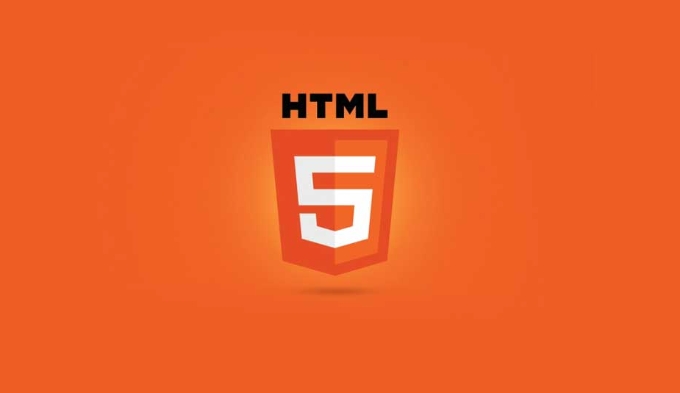Advanced H5 Pointer Events for Complex Interactions
Jul 19, 2025 am 01:16 AMpointer-events is a CSS attribute that controls whether an element responds to pointer events. Common values include auto, none, visiblePainted, etc.; 1. It can be used to achieve "visual existence but not clickable", such as button disable effect; 2. Intercept clicks in the pop-up mask layer to prevent background elements from being operated; 3. Control multi-layer interactions and dynamically switch layers that can respond to events; 4. It is necessary to combine JS event management to avoid relying solely on pointer-events: none to prevent event triggering; 5. Mobile terminals need to pay attention to compatibility issues, and it is recommended to coordinate with opacity and event listeners to control the interaction logic.

In web development, especially when designing H5 pages involving complex interactions, the CSS attribute pointer-events is often underestimated. It not only controls whether elements can respond to mouse events, but also affects touch, gestures and other operations. Understanding and flexibly using pointer-events can give you more refined control over user interaction processes.

What are pointer-events?
pointer-events is a CSS property that defines whether HTML elements react to pointer (such as mouse, stylus, fingers) events. Its default value is auto , indicating that the element responds to click, hover and other events normally.
Some common values include:

-
auto: respond to events normally -
none: completely ignore all pointer events -
visiblePainted: fires only if the mouse is on the visible area -
stroke/fill: mainly used for SVG elements
To give a simple example: when you want a button to "seem to exist but cannot be clicked", setting pointer-events: none is more direct and effective than using disabled .
How to use pointer-events in complex interactions?
In the H5 page, we often encounter multiple cascade elements, animation switching, or drag-and-drop operations. At this time pointer-events it can prevent unnecessary event interference.

Common Scene 1: Pop-up mask layer intercepts clicks
Sometimes you want to prevent the user from clicking on the element behind it after a floating layer pops up. In addition to using z-index to control the hierarchy, you can also set pointer-events: auto for the mask layer and pointer-events: none for the page body, so that only the mask layer can interact.
Common Scenario 2: Multi-layer interactive control
If you have multiple overlapping canvas or SVG layers, you can dynamically switch pointer-events to decide which layer currently accepts events. For example, in the drawing application, you may only allow the currently selected layer to receive drawing actions.
Suggested practices:
- Use JS to switch properties dynamically instead of hard-coded in CSS
- Avoid abuse of
pointer-events: none, otherwise it may cause confusion in user experience - Combining opacity and pointer-events to achieve a "visual existence but not interactive" state
Relationship with JavaScript event processing
While pointer-events prevents events from bubbling and triggering, it does not really "disable" event listeners on elements. In other words, if you manually bind the click event and the element is not detected by the browser by skip pointer-events: none , some browser behavior may still trigger events (especially inconsistent on iOS).
Therefore, a safer approach is:
- Use
pointer-events: noneand remove/add event listener - Unified management of interactive logic when component state changes
- For mobile devices, pay special attention to the compatibility issues between touchstart and click
Let's summarize how to use it the most secure
To make pointer-events play the most role in complex interactions, remember several key points:
- It is a powerful tool to control pointer event response, but not the only means
- Mostly used in UI state switching, animation transition, interactive isolation and other scenarios
- Better use with JS event system
- Different devices and browsers perform slightly differently and require testing and verification
Basically that's it. Mastering this attribute will make you more comfortable when interacting with H5 pages.
The above is the detailed content of Advanced H5 Pointer Events for Complex Interactions. For more information, please follow other related articles on the PHP Chinese website!

Hot AI Tools

Undress AI Tool
Undress images for free

Undresser.AI Undress
AI-powered app for creating realistic nude photos

AI Clothes Remover
Online AI tool for removing clothes from photos.

Clothoff.io
AI clothes remover

Video Face Swap
Swap faces in any video effortlessly with our completely free AI face swap tool!

Hot Article

Hot Tools

Notepad++7.3.1
Easy-to-use and free code editor

SublimeText3 Chinese version
Chinese version, very easy to use

Zend Studio 13.0.1
Powerful PHP integrated development environment

Dreamweaver CS6
Visual web development tools

SublimeText3 Mac version
God-level code editing software (SublimeText3)

Hot Topics
 Adding drag and drop functionality using the HTML5 Drag and Drop API.
Jul 05, 2025 am 02:43 AM
Adding drag and drop functionality using the HTML5 Drag and Drop API.
Jul 05, 2025 am 02:43 AM
The way to add drag and drop functionality to a web page is to use HTML5's DragandDrop API, which is natively supported without additional libraries. The specific steps are as follows: 1. Set the element draggable="true" to enable drag; 2. Listen to dragstart, dragover, drop and dragend events; 3. Set data in dragstart, block default behavior in dragover, and handle logic in drop. In addition, element movement can be achieved through appendChild and file upload can be achieved through e.dataTransfer.files. Note: preventDefault must be called
 Handling reconnections and errors with HTML5 Server-Sent Events.
Jul 03, 2025 am 02:28 AM
Handling reconnections and errors with HTML5 Server-Sent Events.
Jul 03, 2025 am 02:28 AM
When using HTML5SSE, the methods to deal with reconnection and errors include: 1. Understand the default reconnection mechanism. EventSource retrys 3 seconds after the connection is interrupted by default. You can customize the interval through the retry field; 2. Listen to the error event to deal with connection failure or parsing errors, distinguish error types and execute corresponding logic, such as network problems relying on automatic reconnection, server errors manually delay reconnection, and authentication failure refresh token; 3. Actively control the reconnection logic, such as manually closing and rebuilding the connection, setting the maximum number of retry times, combining navigator.onLine to judge network status to optimize the retry strategy. These measures can improve application stability and user experience.
 Getting user location with HTML5 geolocation API
Jul 04, 2025 am 02:03 AM
Getting user location with HTML5 geolocation API
Jul 04, 2025 am 02:03 AM
To call GeolocationAPI, you need to use the navigator.geolocation.getCurrentPosition() method, and pay attention to permissions, environment and configuration. First check whether the browser supports API, and then call getCurrentPosition to obtain location information; the user needs to authorize access to the location; the deployment environment should be HTTPS; the accuracy or timeout can be improved through configuration items; the mobile behavior may be limited by device settings; the error type can be identified through error.code and given corresponding prompts in the failed callback to improve user experience and functional stability.
 Understanding the autoplay policy changes affecting HTML5 video.
Jul 03, 2025 am 02:34 AM
Understanding the autoplay policy changes affecting HTML5 video.
Jul 03, 2025 am 02:34 AM
The core reason why browsers restrict the automatic playback of HTML5 videos is to improve the user experience and prevent unauthorized sound playback and resource consumption. The main strategies include: 1. When there is no user interaction, audio automatic playback is prohibited by default; 2. Allow mute automatic playback; 3. Audio videos must be played after the user clicks. The methods to achieve compatibility include: setting muted properties, mute first and then play in JS, and waiting for user interaction before playing. Browsers such as Chrome and Safari perform slightly differently on this strategy, but the overall trend is consistent. Developers can optimize the experience by first mute playback and provide an unmute button, monitoring user clicks, and handling playback exceptions. These restrictions are particularly strict on mobile devices, with the aim of avoiding unexpected traffic consumption and multiple videos
 Handling different video formats for HTML5 video compatibility.
Jul 02, 2025 pm 04:40 PM
Handling different video formats for HTML5 video compatibility.
Jul 02, 2025 pm 04:40 PM
To improve HTML5 video compatibility, multi-format support is required. The specific methods are as follows: 1. Select three mainstream formats: MP4, WebM, and Ogg to cover different browsers; 2. Use multiple elements in the tag to arrange them according to priority; 3. Pay attention to preloading strategies, cross-domain configuration, responsive design and subtitle support; 4. Use HandBrake or FFmpeg for format conversion. Doing so ensures that videos are played smoothly on all kinds of devices and browsers and optimizes the user experience.
 Using ARIA attributes with HTML5 semantic elements for accessibility
Jul 07, 2025 am 02:54 AM
Using ARIA attributes with HTML5 semantic elements for accessibility
Jul 07, 2025 am 02:54 AM
The reason why ARIA and HTML5 semantic tags are needed is that although HTML5 semantic elements have accessibility meanings, ARIA can supplement semantics and enhance auxiliary technology recognition capabilities. For example, when legacy browsers lack support, components without native tags (such as modal boxes), and state updates need to be dynamically updated, ARIA provides finer granular control. HTML5 elements such as nav, main, aside correspond to ARIArole by default, and do not need to be added manually unless the default behavior needs to be overridden. The situations where ARIA should be added include: 1. Supplement the missing status information, such as using aria-expanded to represent the button expansion/collapse status; 2. Add semantic roles to non-semantic tags, such as using div role to implement tabs and match them
 Securing HTML5 web applications against common vulnerabilities
Jul 05, 2025 am 02:48 AM
Securing HTML5 web applications against common vulnerabilities
Jul 05, 2025 am 02:48 AM
The security risks of HTML5 applications need to be paid attention to in front-end development, mainly including XSS attacks, interface security and third-party library risks. 1. Prevent XSS: Escape user input, use textContent, CSP header, input verification, avoid eval() and direct execution of JSON; 2. Protect interface: Use CSRFToken, SameSiteCookie policies, request frequency limits, and sensitive information to encrypt transmission; 3. Secure use of third-party libraries: periodic audit dependencies, use stable versions, reduce external resources, enable SRI verification, ensure that security lines have been built from the early stage of development.
 Integrating CSS and JavaScript effectively with HTML5 structure.
Jul 12, 2025 am 03:01 AM
Integrating CSS and JavaScript effectively with HTML5 structure.
Jul 12, 2025 am 03:01 AM
HTML5, CSS and JavaScript should be efficiently combined with semantic tags, reasonable loading order and decoupling design. 1. Use HTML5 semantic tags, such as improving structural clarity and maintainability, which is conducive to SEO and barrier-free access; 2. CSS should be placed in, use external files and split by module to avoid inline styles and delayed loading problems; 3. JavaScript is recommended to be introduced in front, and use defer or async to load asynchronously to avoid blocking rendering; 4. Reduce strong dependence between the three, drive behavior through data-* attributes and class name control status, and improve collaboration efficiency through unified naming specifications. These methods can effectively optimize page performance and collaborate with teams.






